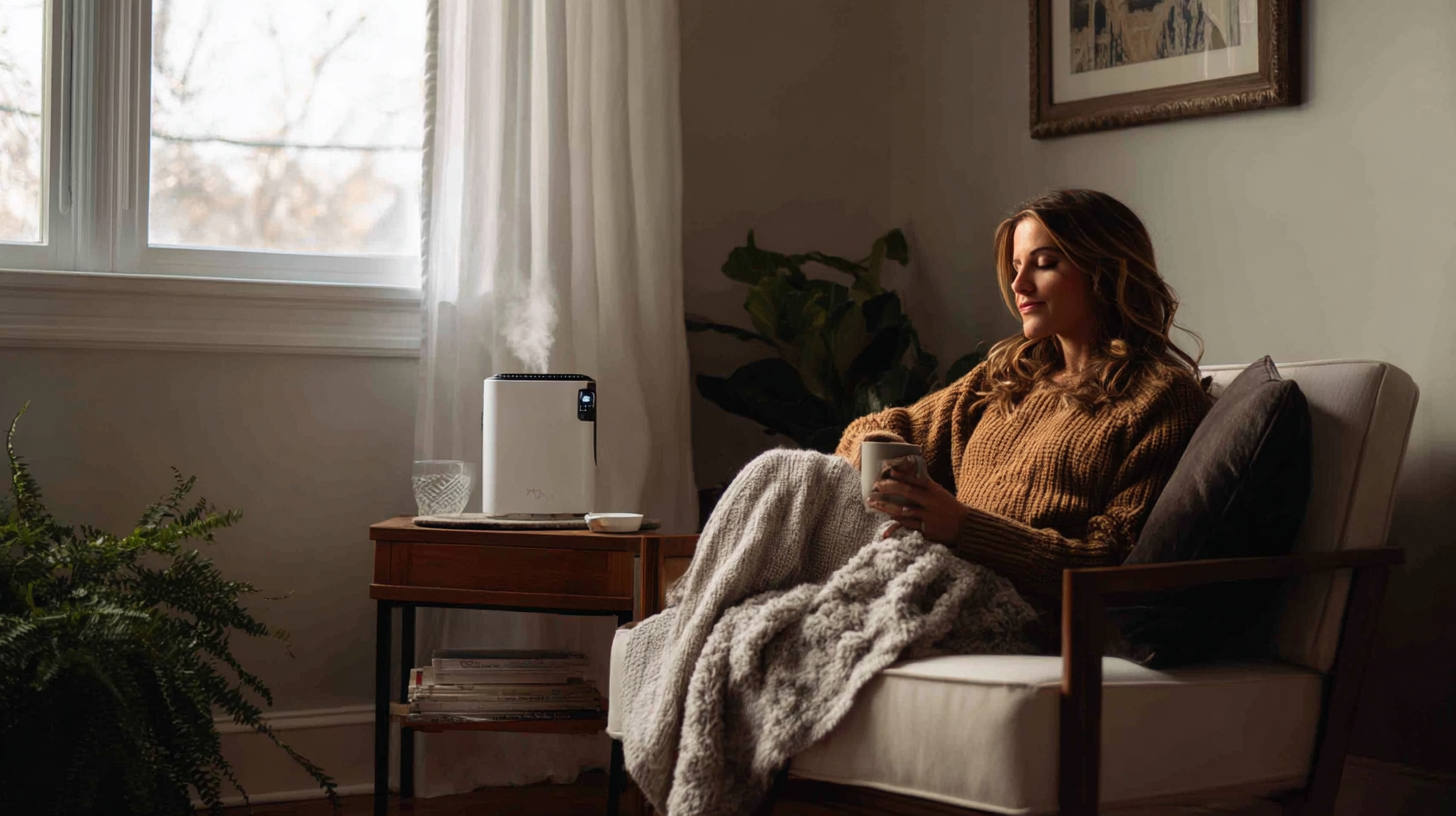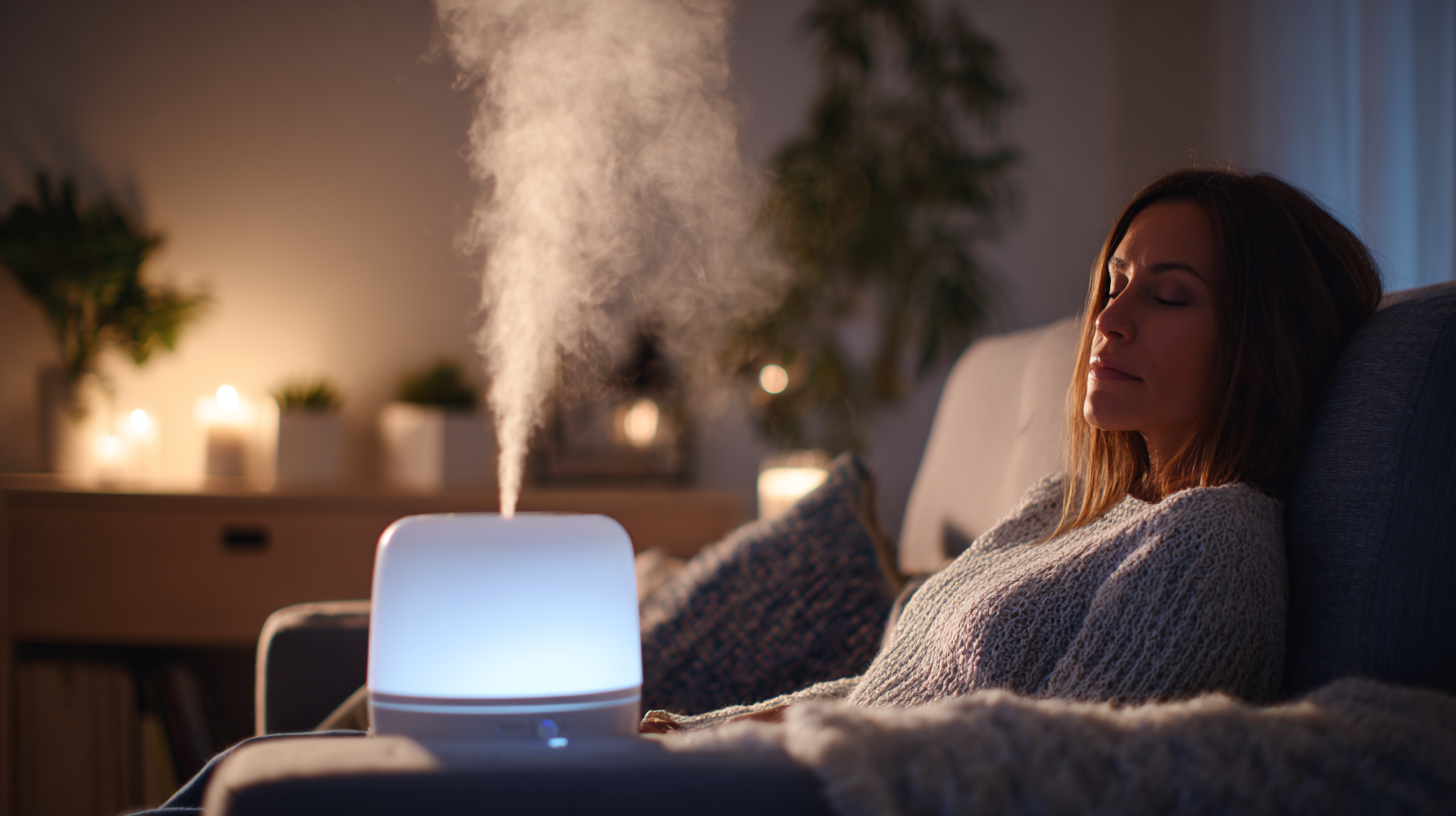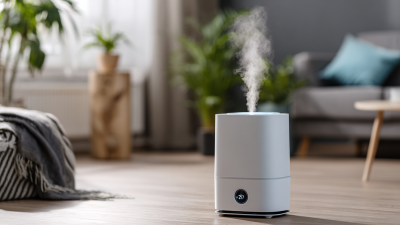As homeowners seek to enhance their indoor comfort, the importance of maintaining optimal humidity levels becomes increasingly evident. A furnace humidifier, which can be integrated directly into the HVAC system, plays a crucial role in achieving this balance. According to a 2021 report by the Environmental Protection Agency, maintaining indoor relative humidity between 30% to 50% not only enhances comfort but also helps prevent issues such as dry skin, respiratory problems, and damage to wooden furniture and structures. Furthermore, the American Society of Heating, Refrigerating and Air-Conditioning Engineers emphasizes that proper humidity control can lead to a decrease in energy consumption, providing an environmentally friendly and cost-effective solution for homeowners. By understanding the essential benefits of using a furnace humidifier, residents can significantly improve their home environment during the harsh winter months.

A furnace humidifier is a device designed to add moisture to the air in your home, working in conjunction with your heating system. Unlike portable humidifiers, which can only service a single room, a furnace humidifier integrates directly with your furnace, allowing it to humidify the entire house efficiently. When the furnace operates, the humidifier draws in water from the plumbing system and vaporizes it to be circulated alongside the warm air. This process helps maintain optimal humidity levels, particularly during dry winter months when indoor air can become excessively dry.
The operation of a furnace humidifier is typically controlled by a humidistat, which monitors humidity levels in the home and adjusts the device's output accordingly. This automation ensures a consistent and comfortable humidity level, which can be particularly beneficial for your health and comfort. A well-balanced humidity level not only enhances air quality but also helps alleviate respiratory issues, dry skin, and other discomforts associated with dry air. By investing in a furnace humidifier, homeowners can enjoy a more comfortable living environment throughout the cold months.

Maintaining optimal humidity levels in your home can significantly enhance comfort and well-being, especially during the dry winter months. A furnace humidifier is an effective solution for increasing humidity, providing a range of benefits that improve the indoor environment.
 One key advantage is the prevention of dry skin and respiratory issues. When humidity levels are too low, the air can wreak havoc on your skin, leading to irritation and increased susceptibility to colds and flu. By adding moisture to the air, a humidifier helps to alleviate these discomforts, promoting healthier skin and clearer airways.
One key advantage is the prevention of dry skin and respiratory issues. When humidity levels are too low, the air can wreak havoc on your skin, leading to irritation and increased susceptibility to colds and flu. By adding moisture to the air, a humidifier helps to alleviate these discomforts, promoting healthier skin and clearer airways.
Additionally, a humidifier can protect your home and belongings. Dry air can cause wood furniture and flooring to crack and warp, as well as create static electricity that leads to damage in electronic devices. By maintaining an ideal humidity level, a furnace humidifier helps to preserve the integrity of your home’s furnishings and structures. Furthermore, it creates a more comfortable living environment by regulating temperature perceptions; humidified air feels warmer, allowing you to lower your thermostat and reduce heating costs. Overall, incorporating a furnace humidifier into your home system is a proactive step towards enhancing both comfort and preservation.
A furnace humidifier is an essential addition to any home, particularly during the dry winter months when heating systems can deplete indoor moisture levels significantly. According to the American Society of Heating, Refrigerating and Air-Conditioning Engineers (ASHRAE), the ideal indoor relative humidity level should be maintained between 30% and 50%. Unfortunately, many homes fall below this range during colder months, leading to discomfort and potential health issues. By using a furnace humidifier, homeowners can effectively increase humidity levels, promoting a more comfortable living environment.
The benefits extend beyond mere comfort; maintaining appropriate humidity levels can also enhance overall health. The Mayo Clinic notes that low humidity can exacerbate respiratory issues and dry skin, increasing susceptibility to colds and flu. A study published in the Journal of Environmental Health found that maintaining indoor humidity above 40% significantly reduces the survival of viruses that cause influenza, thereby decreasing transmission rates. As a result, a furnace humidifier not only ensures personal comfort by alleviating dry air discomfort but also plays a vital role in promoting a healthier home environment.
| Benefit | Description | Impact on Health | Impact on Comfort |
|---|---|---|---|
| Improved Air Quality | Adds moisture to the air, reducing dryness. | Helps prevent respiratory issues and allergies. | Creates a more pleasant living environment. |
| Prevents Dry Skin | Maintains skin moisture by balancing humidity levels. | Reduces the risk of skin irritation and dermatitis. | Increases overall comfort during dry seasons. |
| Reduces Static Electricity | Maintains optimal humidity to decrease static build-up. | Lowers the risk of static shocks. | Enhances comfort with less annoying static disruptions. |
| Energy Efficiency | Allows for a lower thermostat setting while maintaining comfort. | Helps reduce energy bills and consumption. | Creates a cozy feel without needing excessive heating. |
| Protects Furnishings | Prevents wood furniture from cracking and warping due to low humidity. | Maintains the integrity of your home's investments. | Preserves the aesthetic and functionality of decor. |
When selecting the ideal furnace humidifier for your home, it’s crucial to consider factors such as your home's size, existing heating system, and specific humidity needs. According to the Environmental Protection Agency (EPA), indoor humidity levels should ideally be maintained between 30% and 50% during the winter months. Choosing a humidifier that accurately regulates these levels can prevent issues like dry skin, respiratory discomfort, and static electricity buildup.
There are several types of humidifiers available, including bypass humidifiers, fan-powered models, and steam humidifiers. A study by the American Society of Heating, Refrigerating, and Air-Conditioning Engineers (ASHRAE) indicates that fan-powered humidifiers are particularly effective for larger homes as they can distribute moisture more evenly. Additionally, if your home has a sealed heating system, a steam humidifier may be beneficial as it injects steam directly into the ductwork, providing a consistent humidity level. Understanding these distinctions will help homeowners select a furnace humidifier that meets their needs and enhances overall comfort throughout the home.
Maintaining your furnace humidifier is crucial for ensuring it operates efficiently and effectively throughout the heating season. Regular checks can prevent common issues like clogged filters and leaky connections. One tip is to clean or replace the humidifier filter at least once every month, as a dirty filter can obstruct airflow and reduce humidity output.
Another important aspect of upkeep is monitoring the humidity levels in your home. Ideally, indoor humidity should be maintained between 30% and 50%. You can use a hygrometer to keep track of these levels. If you notice it dipping below this range, consider adjusting the humidifier settings. Additionally, make sure to inspect the humidifier pads and replace them as needed, as worn-out pads can significantly impair performance.
Finally, don't forget to perform a thorough inspection before the start of each heating season. Check for any signs of leaks, mold, or buildup. Flushing the humidifier with clean water will help eliminate mineral deposits and improve efficiency. Keeping up with these maintenance tasks will ensure that your furnace humidifier consistently provides optimal comfort in your home.





